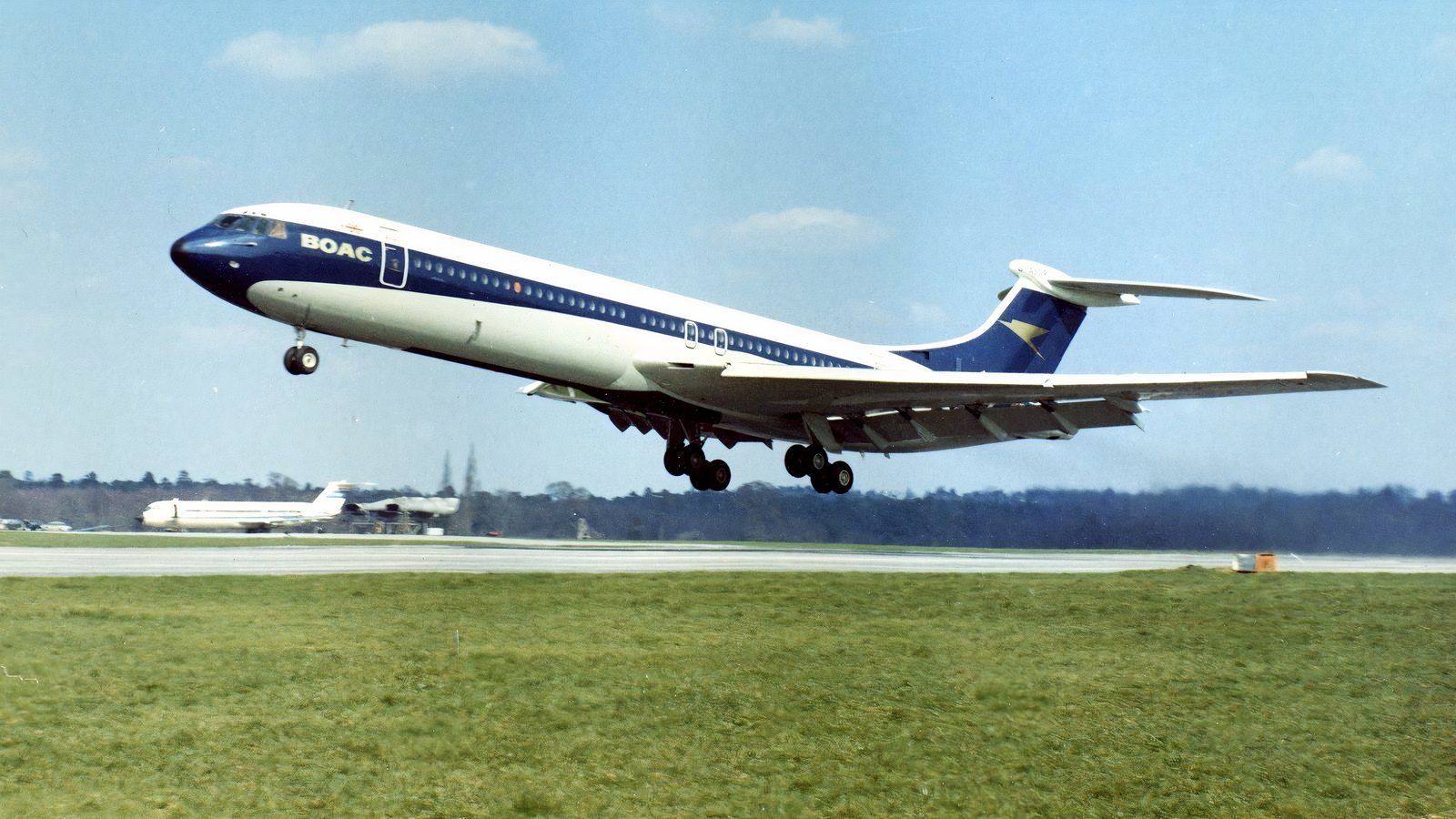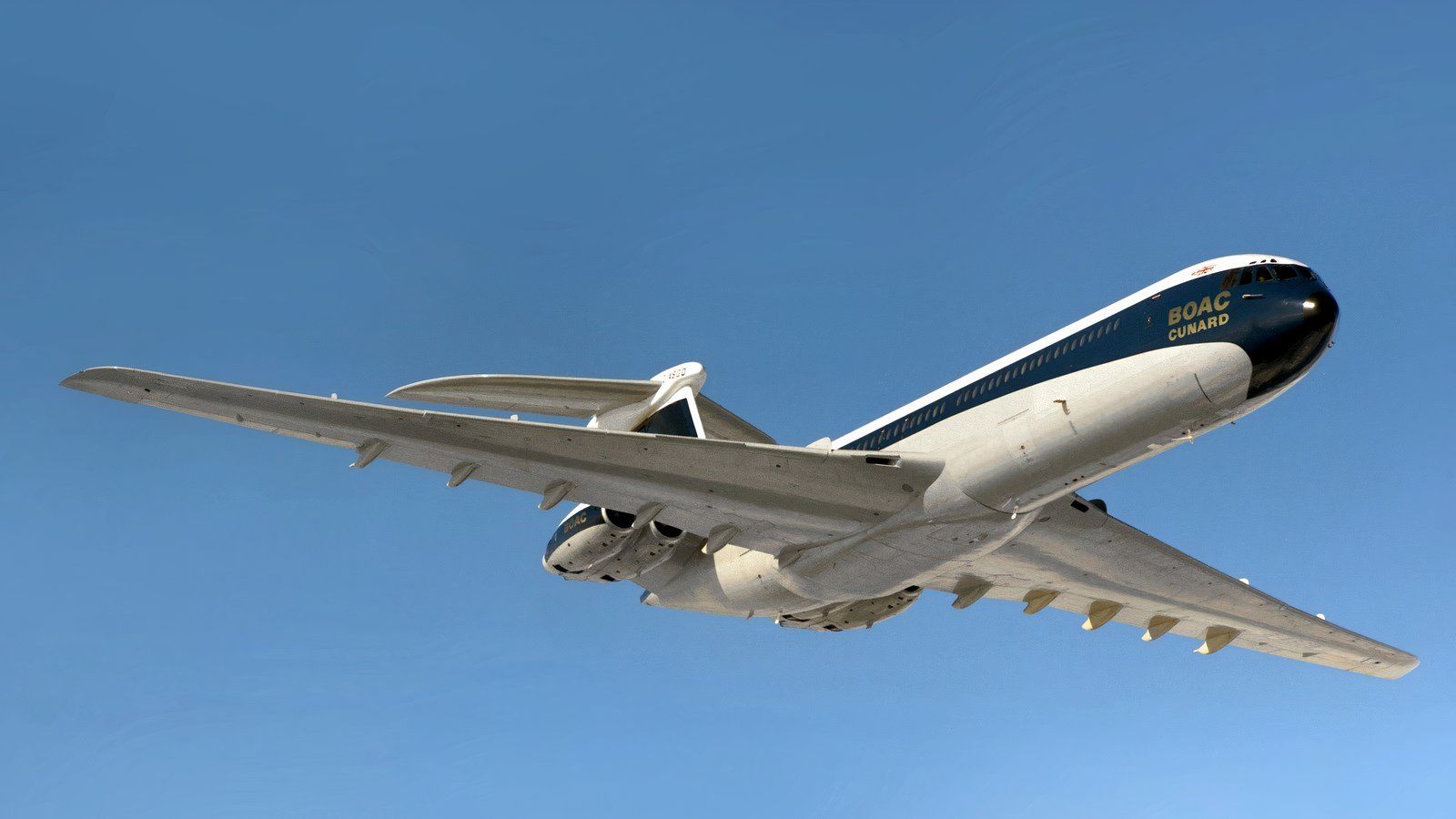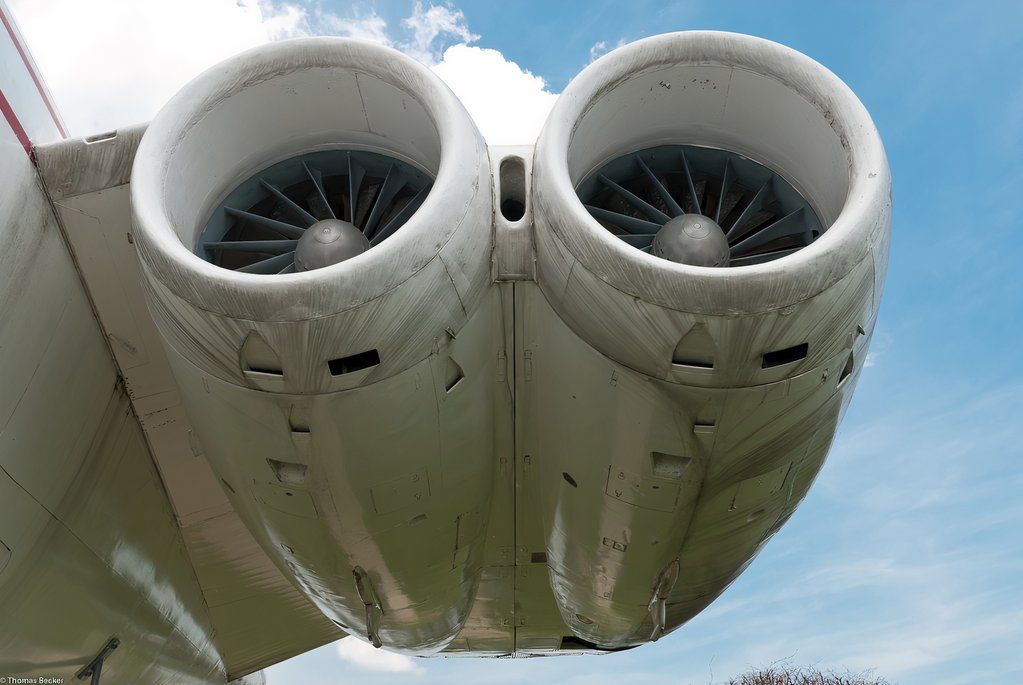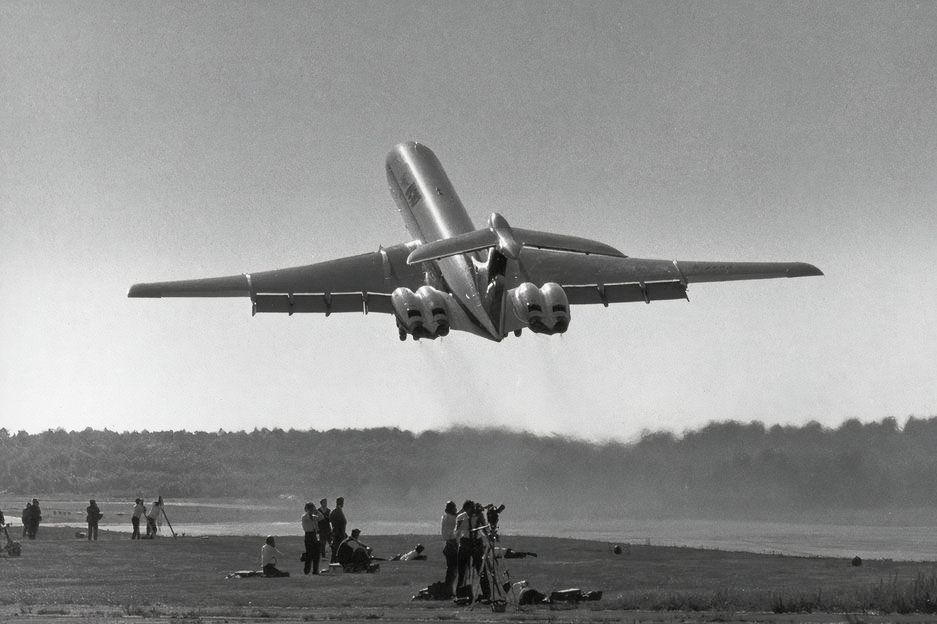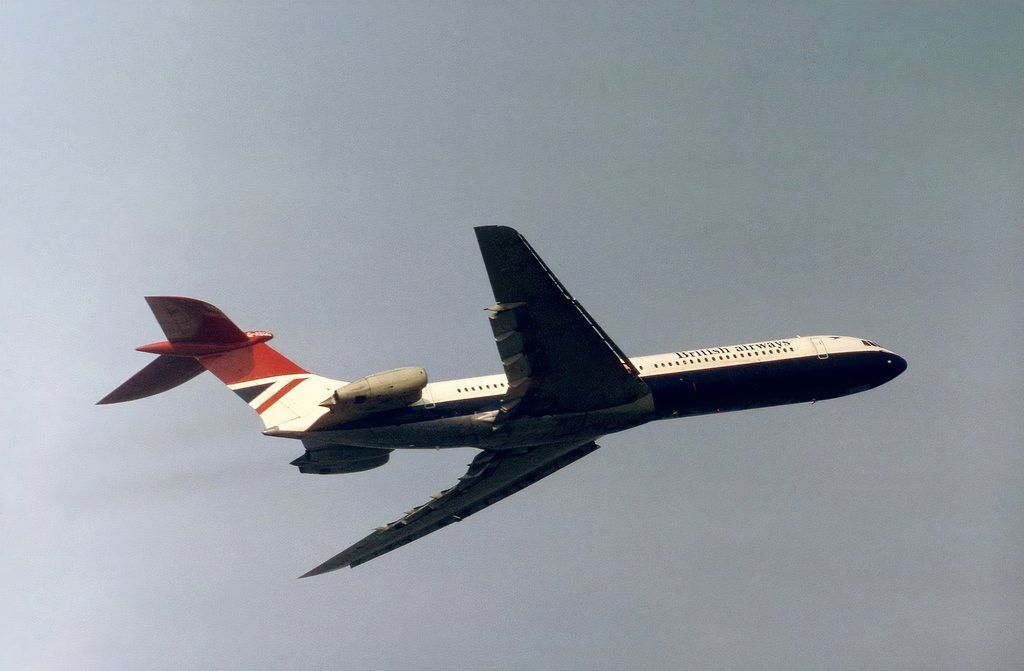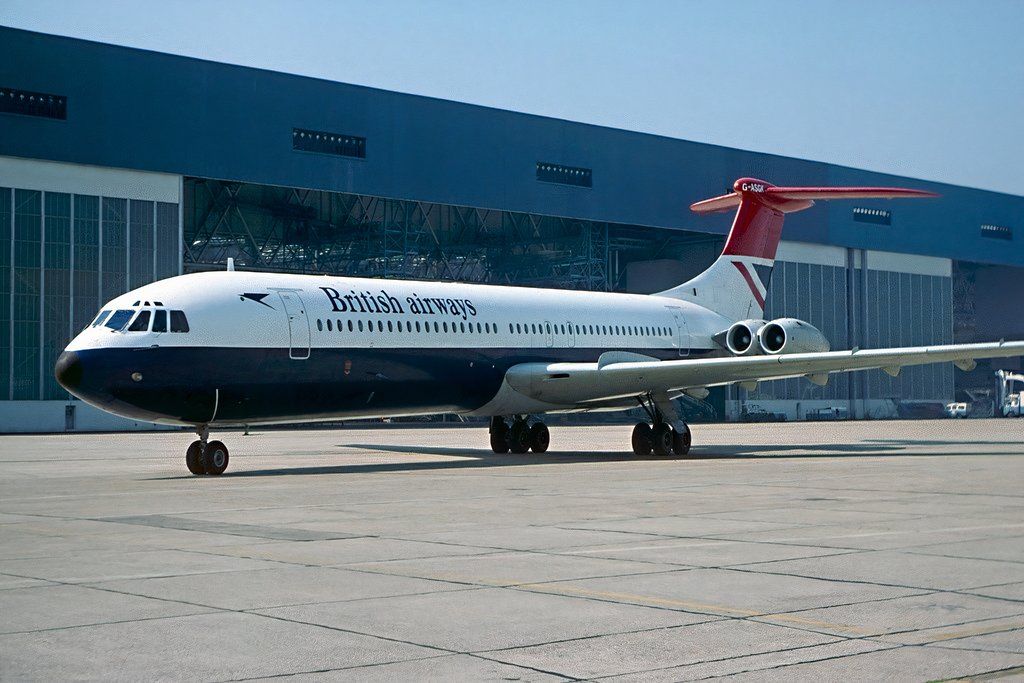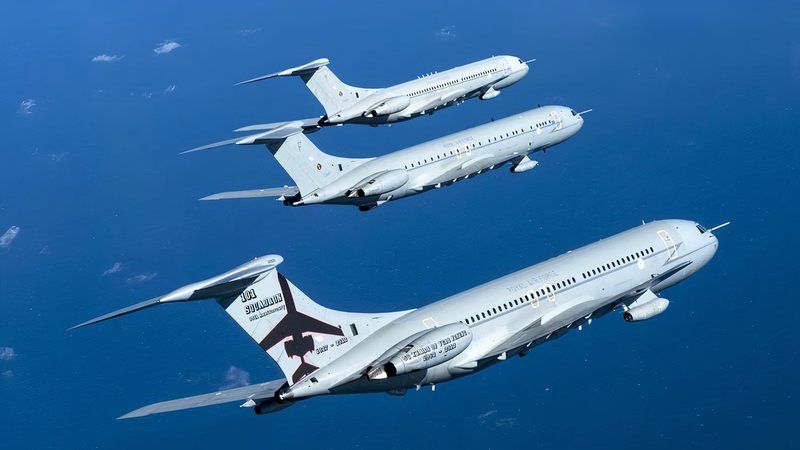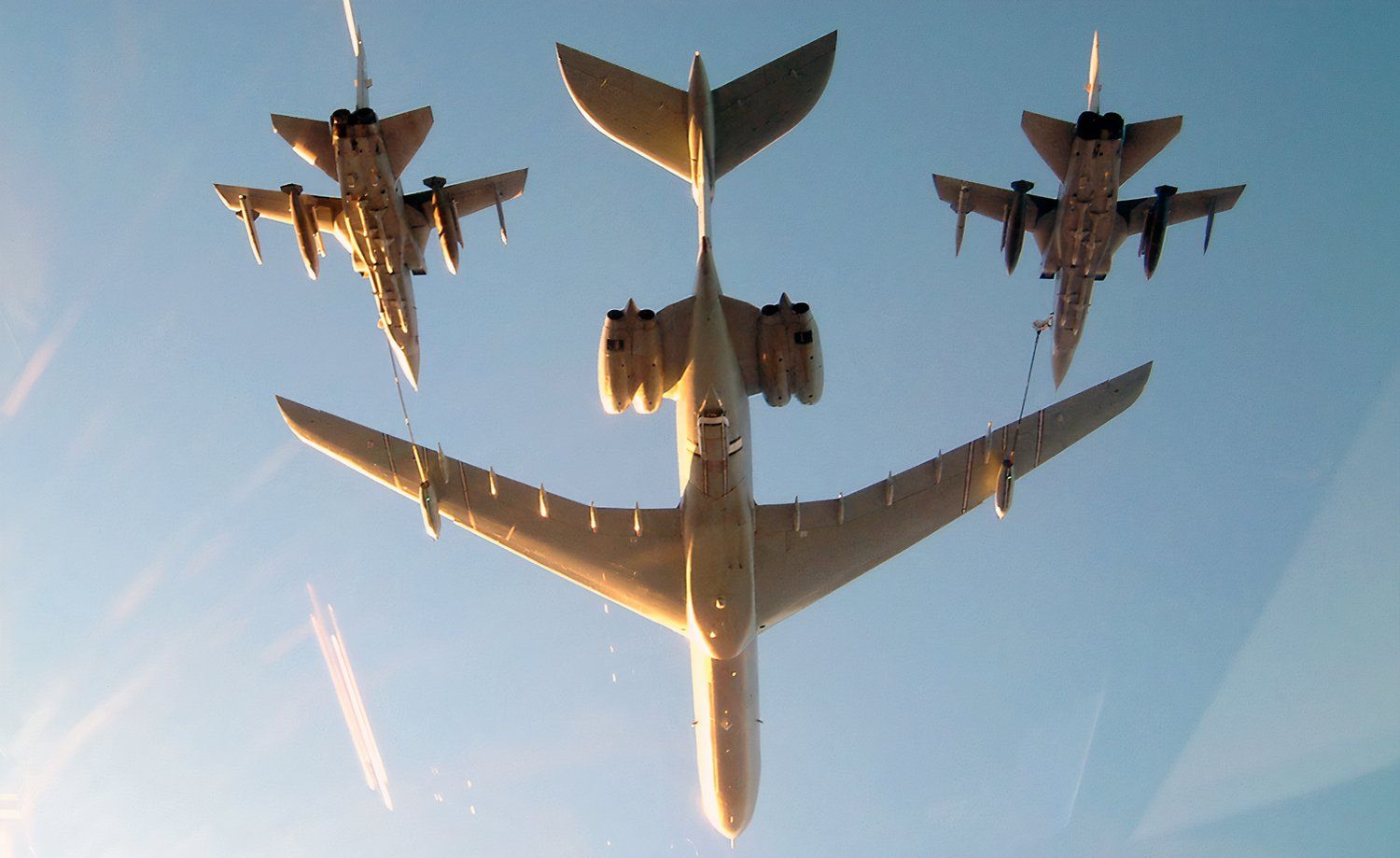Summary
- Designed for ‘hot and high’ conditions across BOAC’s ‘Empire routes’ with high lift wings and an efficient rear engine design.
- The iconic rear-mounted quad-jet layout created a smoother, quieter ride, but faced safety challenges.
- A British Airways VC10 held the record for the fastest sub-sonic transatlantic flight for over 40 years.
It is unquestionable that the Vickers VC10 is an iconic aircraft and one of the most beautiful designs ever built. Its elegant swept wings and the soaring sweep of its T-tail earned it the title “Queen of the Skies”. But most eye-catching was its four rear-mounted Rolls-Royce Conway turbofans, and its roaring take-offs to exotic destinations echoed the bravado and excitement of the swinging sixties.
However, the VC10 never achieved the same commercial success as contemporaries such as the Boeing 707 and Douglas DC-8. With just 54 airframes ever built, it fell well short of the 75 required for the program to break even, according to Vickers’ original estimations. Yet the VC10 had a long and storied career as both a commercial and military aircraft. So what was it that made the Vickers VC10 so special?

Related
The Story Of The Vickers VC10
From its launch in 1964 with BOAC to its 50-year tenure as a tanker for the RAF, the VC10 has been a longstanding icon of the UK’s aviation industry.
Vickers who? Find out more about this this British aircraft manufacturer here
Enhanced performance for hot and high conditions
The Vickers VC10 came about as the answer to a very specific need. BOAC (the predecessor to British Airways) had ordered 15 Boeing 707’s in the late 1950s, which flourished on its transatlantic routes. But the type had a notable weakness: It was too large and under-powered for its medium-to-long range “Empire routes” to Africa and Asia. These often included destinations like Johannesburg, Nairobi and Karachi, with ‘hot and high’ airports that significantly reduced aircraft performance.
Photo: Quantillion
Enter the VC10, which was purpose-designed for this mission. Its high lift wings were equipped with wide chord Fowler flaps and full-span leading edge slats, maximizing take-off and climb performance from short runways. Performance was enhanced further with its rear engine design, which left an efficient, clean wing. The result was that the VC10 was able to take off and land at lower speeds and with higher stability than a Boeing 707. And with engines that produced considerably more thrust, it was able to deliver on the ‘hot and high’ performance needs.
Iconic tail and engine layout
Ask any aviation geek about the Vickers VC10, and likely their first mention will be given to the rear-mounted quad-jet design. While not unique – the Ilyushin Il-62 also had this layout – it certainly made the VC10 stand out in a world of wing-mounted quad-jets. The reasoning behind the design was that mounting the engines on the aft fuselage kept them further away from the runway, a critical consideration considering the dust and debris from rough runways across Africa and Asia.
Photo: Thomas Becker
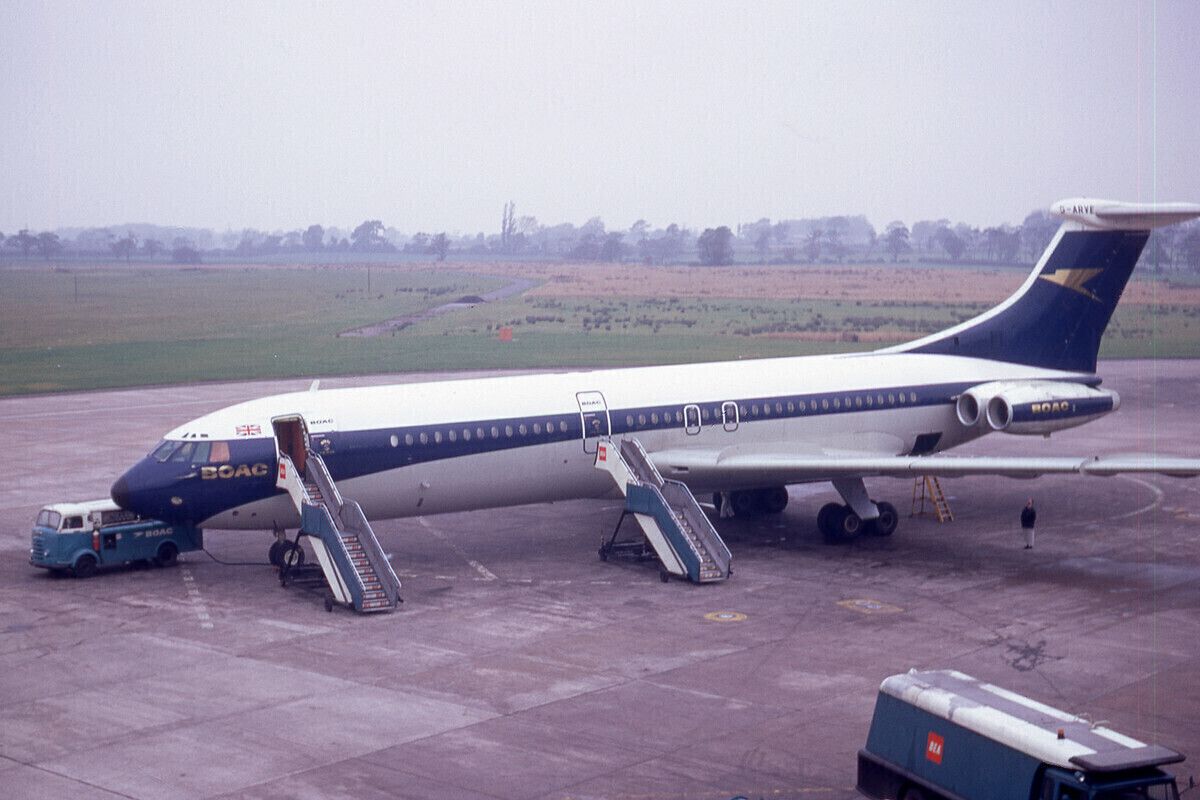
Related
Vickers VC10 vs. Ilyushin Il-62 – How Similar Were The Aircraft?
However, this iconic appearance created its own set of challenges. In 1969, a BOAC flight on climb-out from London Heathrow suffered a major mechanical failure in engine three (starboard-inner). This resulted in turbine blades penetrating engine four, positioned right alongside, causing it to catch fire.
The flight returned to Heathrow with just two operational engines, and remarkably was able to land safely while 90,000 pounds over the design limit landing weight. With no injuries and the only other damage being two deflated tires, the incident is a testament to the robust design of the aircraft. However, all VC10 engines had to subsequently be fitted with kevlar to avoid a repeat of the incident.
A smoother and quieter ride
Something else that made the VC10 so special for its time was that it was a far smoother and quieter ride compared to the Boeing 707 and Douglas DC-8. As Captain Alan Robinson, one of the early VC10 pilots for BOAC explains:
“It really was a gentleman’s flying machine. It was far smoother on the climb out, much more stable to fly, and less skittery on the approach than the 707. Much more pleasant for the passengers, and for the pilots it was magic, it handled like a dream.”
The rear-mounted engines also meant much less cabin noise, something that was appreciated by passengers on the overnight ‘Empire routes’. Of course, things were not quite the same outside the cabin. With four Rolls-Royce Conways howling at take off, the VC10 was infamous as one of the loudest aircraft ever built, and only escaped greater attention for its noise pollution because it shared the same airspace with the filthy-loud Concorde.
Photo: Brooklands Museum Archives
Fastest subsonic airliner
Another thing that the VC10 shared with Concorde was a need for speed. While the latter is renowned for being the fastest commercial aircraft to fly, until recently, the VC10 held the record as the fastest subsonic commercial aircraft.
Photo: Wikimedia Commons
In 1979, a British Airways VC10 set a new record for a subsonic transatlantic crossing with a flight time of just five hours and one minute between New York’s John F. Kennedy International Airport (JFK) and Glasgow Prestwick Airport (PIK). The record remained unbeaten for over 40 years. Gwyn Mullet, captain of the flight that evening, remembers it well:
“I checked in with operations at JFK, and the flight plan was about five and a quarter hours, which was pretty quick, so I asked what the record was for the route and they said that it was held by a 707 at five hours and eight minutes. My tail was up so I put in a little extra fuel and told the crew we were out to beat that time. We hurtled across the North Atlantic at a speed that was just below the maximum the aircraft allowed. My flight engineer was in his element and spent the night fine-tuning the engines. Then the chief steward came onto the flight deck and announced that the dinner service was complete and the passengers were all bedded down for the night. ‘I’m sorry to spoil your break, but we’ll be landing in just over two hours’ I said. ‘What are we flying? A bloody Concorde or something? Now I’ll have to wake them for breakfast in an hour,’ he replied.’Scrub the breakfast and give them champagne for landing’ was my reply.”
Photo: Wikimedia Commons
British Airways began retiring the VC10 from service in 1974, largely as a reaction to the 1973 Oil Crisis. While some were leased to other airlines, ultimately the VC10 served just ten different carriers in a relatively limited lifespan in commercial service:
- BOAC/British Airways (1964-81)
- British United Airways / British Caledonian (1964-74)
- Ghana Airways (1964-80)
- Nigeria Airways (1964-69)
- Sierra Leone Airways (1964)
- East African Airways (1966-77)
- Middle East Airlines (1967-69)
- Gulf Air (1974-78)
- Air Malawi (1974-79)
- Air Ceylon (1977-78)
A storied military career
But even as its life as a commercial aircraft came to a close, the VC10 had already embarked on a second life as a military aircraft. The Royal Air Force (RAF) had originally purchased 13 VC10s in 1966 as strategic transport aircraft, attracted to those same performance capabilities in tough conditions and short airfields.
Photo: Geoffrey Lee, vc10.net
As the commercial VC10s began retiring, the RAF ultimately picked them up on the cheap as well and from 1977 was converting them into aerial refueling tankers. These military VC10s saw extensive service in the Falklands War, the First Gulf War, the NATO bombing of Yugoslavia, and the wars in Afghanistan and Iraq. The RAF finally retired the VC10 in 2013, nearly 50 years after it first rolled off the production line.
Photo: Royal Air Force
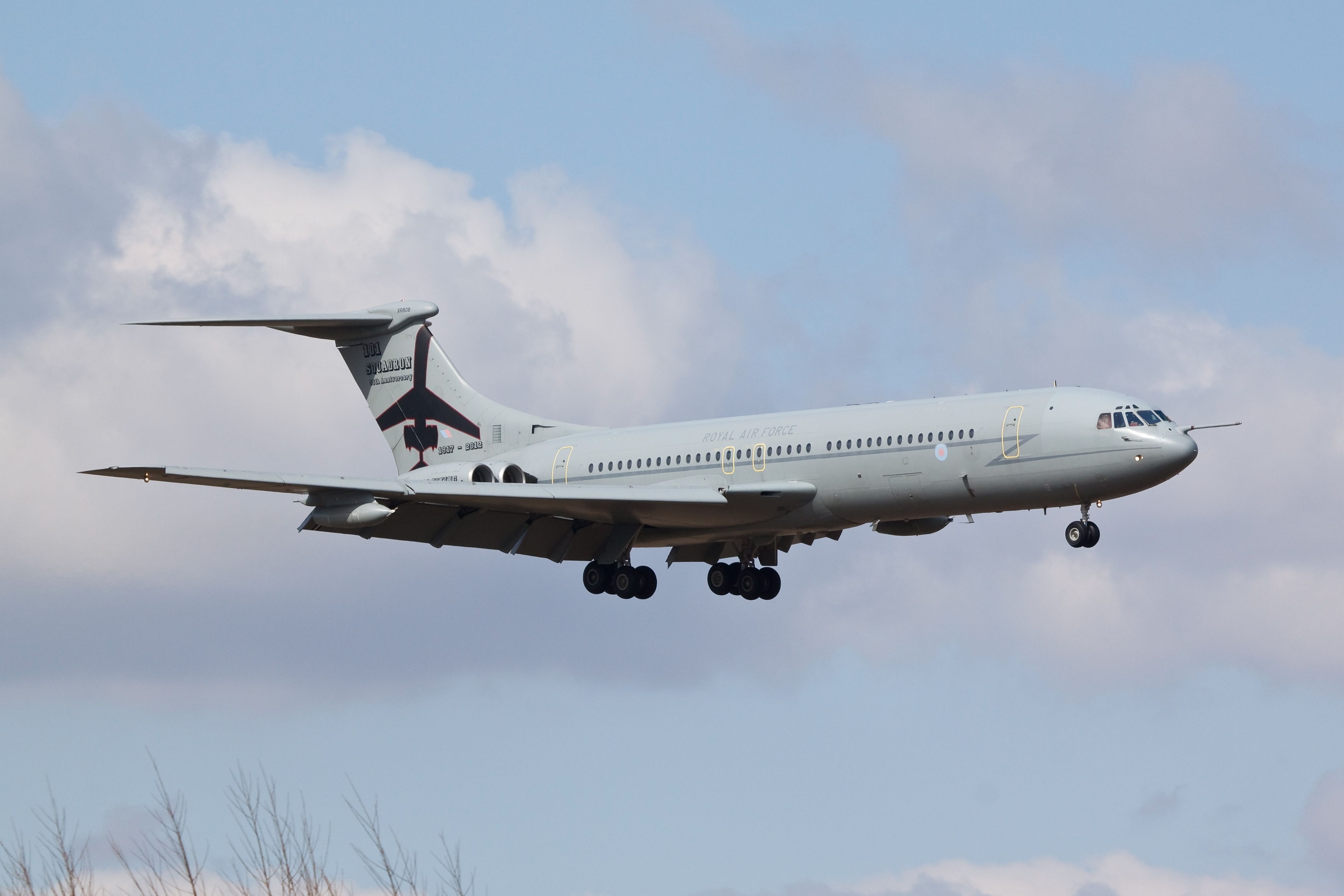
Related
Why Was The Vickers VC10 So Successful With Military Operators?
The VC10 was popular with BOAC but went on to be operated almost entirely by the RAF.
It is notable that the Vickers VC10 was also utilized by the governments of Oman, Qatar and the UAE as royal flights. The RAF also maintained VC10s that were used extensively by the British royal family and prime ministers for overseas trips. The ‘Queen of the Skies’ would ultimately become a firm favorite with her namesake, taking the British sovereign to the farthest flung corners of the Commonwealth.
What are your memories of the Vickers VC10? Have you flown aboard a VC10 flight, or visited a preserved VC10? Share your thoughts and experiences in the comments.

